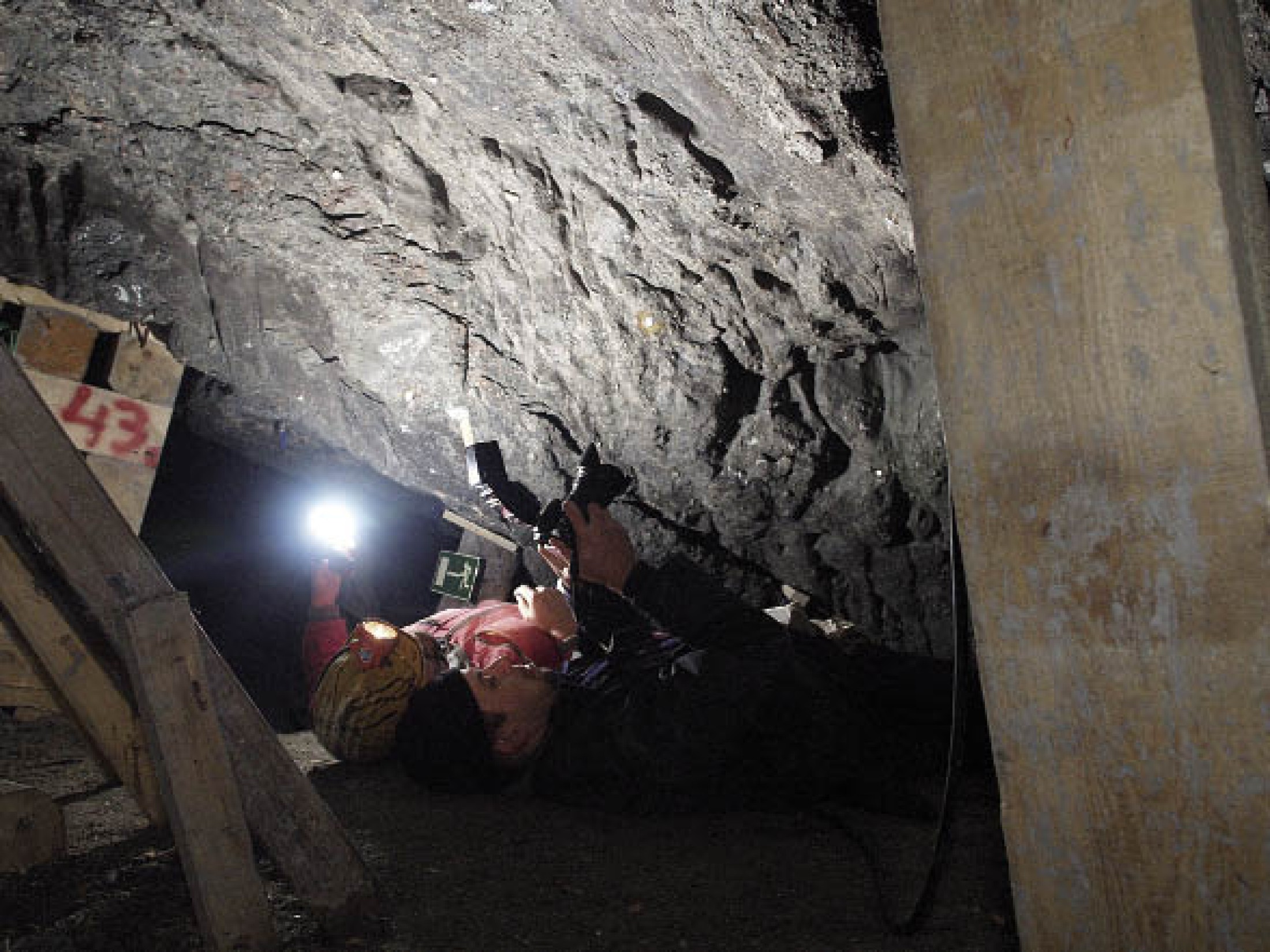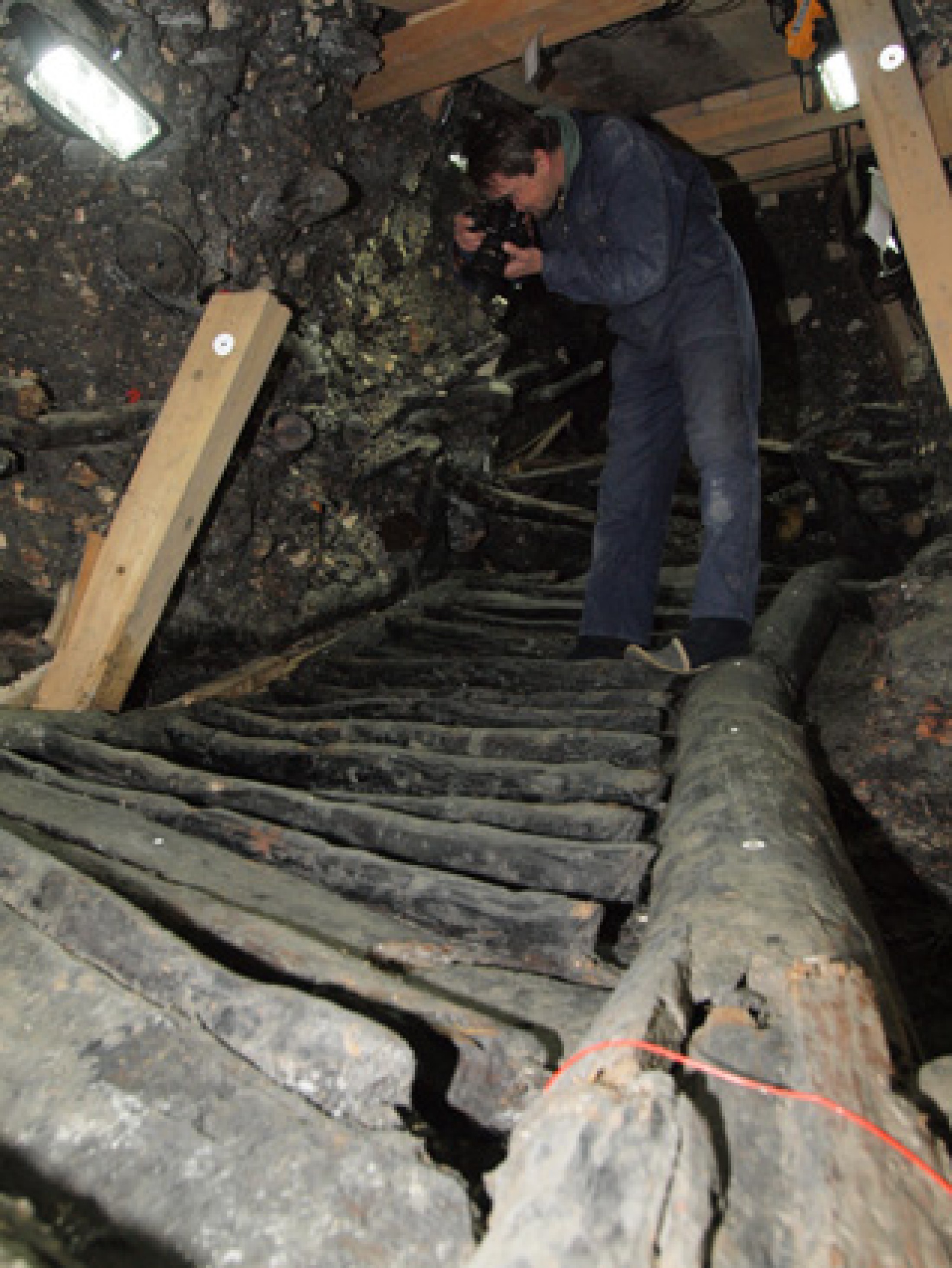Photographic documentation underground
Photography plays a major role in archaeological documentation, though the lack of space available underground often poses a challenge. Overview images, often used for archaeological excavations above ground, are only possible using the photo-mosaic technique applied in Hallstatt since the year 2000. The great precision and high definition possible through this method make it invaluable for researchers.Importance of photographic documentation
Photographic conditions in mines
Photo mosaic
Importance of photographic documentation
In combination with surveying, drawing and photography are the most important means to document finds and contexts in archaeological excavations. They make it possible to record the position and structure of the occupation layers removed during the dig, and they serve as a basis for interpretation.Photographic documentation will interpret an item in a way that is different from drawing, and in archaeological documentation, the two methods are complementary. A drawing renders very clearly all that has been put in it, even information that is incorrect or not visible, while a photograph will render the visible in a uniform way.
Photographic conditions in mines
The lack of space inside a mine entails different logistical and methodological requirements, in particular for photography. Many prehistoric finds are accessible only via tunnels 80-100cm wide, making it impossible to excavate them in their entirety. Therefore, cross-sections are particularly important as these make it possible to identify the various layers belonging to different cultures.Since photography can only record very small areas, the only way of depicting the stratigraphic situation has been drawing. Because of the constant rock pressure, the preservation and accessibility of the findspots cannot be ensured in the long run. This is why scholars have been trying to establish a basis for the discussion of future research in the form of photographic documentation.
Photo mosaic
The first large-scale attempt was made in 2000 in the ‘Kernverwässerungswerk’ section of the mine. The method consists basically in taking overlapping photos of large areas. The precise connection of the pictures utilizes four measuring points photographed on every section. These points make it possible to rectify every single photo, thus obtaining a picture true to scale with precise position coordinates.For example, this technique was used to document an 11m long cross section in the eastern tunnel of the Christian von Tuschwerk mine. As the tunnel is only 80cm wide at this point it was not possible to excavate and photograph all the different layers on the wall. The photo mosaic is made up of 113 individual images and shows a cross-section of the entire wall. The high definition and precise documentation mean that a life size reproduction could be generated.
(Rausch, A. W. – Loew, C.)



